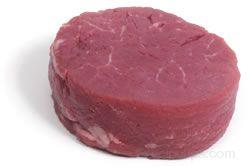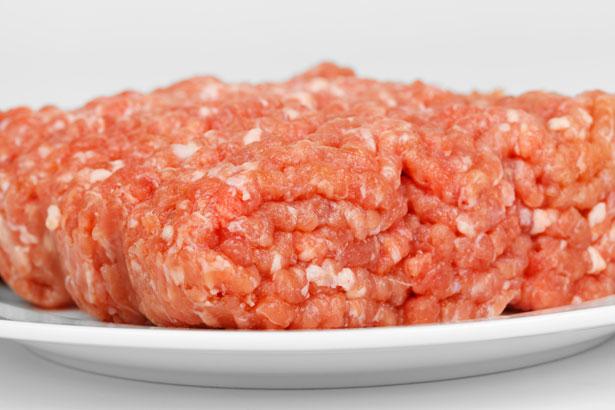Imagine yourself sitting down to dinner in a restaurant of the future — maybe 10 or 15 years from now — and, in the mood to splurge, you order the most expensive cut of beef on the menu. Your waiter asks your preference with regard to temperature and then submits your order in his discreet mini-tablet and you wait eagerly, mouth watering. Back  in the kitchen, a cook confirms receipt of your order and then programs it into the 3D culinary printer and, minutes later, out comes your freshly 3D printed Tournedo and off to the grill it goes to be cooked to a luxurious medium rare.
in the kitchen, a cook confirms receipt of your order and then programs it into the 3D culinary printer and, minutes later, out comes your freshly 3D printed Tournedo and off to the grill it goes to be cooked to a luxurious medium rare.
Sounds impossible? Inedible? It’s definitely possible according to Professor Keith Belk at Colorado State University’s Center for Meat Safety and Quality. The technology isn’t what’s problematic. Scientists are successfully 3D printing human muscle tissue — apologies to the squeamish — so the likelihood of printing animal tissue is almost assured. What makes the endeavor less compelling for researchers as well as food producers is the issue of consumers’ potential aversion to a food that is unarguably processed at a time when, more and more, people are interested in organic products.
Indeed, according to Professor Belk, approximately 88% of consumers prefer grain-fed beef with 12% choosing grass-fed. It’s one thing, say experts, to create a 3D printed meat — whether chicken, pork, or beef — it’s another to simulate the complexities of a given kind of animal tissue and make it palatable. Texture and flavor are pretty much where it’s at for humans when it comes to consuming meat products.
One of the strongest arguments for persisting in the development of this technology is perhaps obvious: According to the United Nations, by the year 2050, the Earth’s population will have reached 9.6 billion. Needless to say, food and the resources required to produce it will be in short supply. The development of technology that could potentially solve one of the most pressing crises of the not-so-distant future drives scientists to continue this particular quest, despite impediments like the palatability factor. Besides, 3D printed meat would not necessarily be considered a substitute for traditionally produced meat products; it could, rather, be considered a means of providing people with healthy sources of protein that are produced in an ethical way.
“While this might be an alternative,” said Professor Joseph Sebranek from Iowa State University, “I wouldn’t expect it to replace the industry, especially with consumer interests in natural, organic products.”
Currently, companies like Modern Meadow in New York are developing biomaterials, products like leather and, eventually, meat that can be 3D printed. The company recently raised $10 million in funding to expand its research in this regard. At the helm of Modern Meadow is Andras Forgacs, who is no stranger to the bioprinting of tissue; with his father, Gabor, he co-founded San Francisco-based Organovo, which is developing bioprinting devices for tissue engineering.
While the technology is different, Modern Meadow’s efforts draw on some of the same expertise. They know, however, that one of the greatest hurdles will be producing 3D printed meat that consumers will find appealing. If a recent survey by GlobalMeatnews.com is any indicator, future purveyors of 3D printed meat have their work cut out for them. Results are still coming in through this poll, but as of the time of writing, when asked if they’d eat 3D printed meat, only 34% of the survey respondents replied in the affirmative; 41% said “no,” and 26% weren’t sure.
Would 3D printed meat appeal to your palate? Let us know what you foresee for the future of the meat industry over at the 3D Printed Meat forum thread at 3DPB.com.
Subscribe to Our Email Newsletter
Stay up-to-date on all the latest news from the 3D printing industry and receive information and offers from third party vendors.
You May Also Like
3D Printing News Briefs, April 13, 2024: Robotics, Orthotics, & Hypersonics
In 3D Printing News Briefs today, we’re focusing first on robotics, as Carnegie Mellon University’s new Robotics Innovation Center will house several community outreach programs, and Ugogo3D is now working...
Rail Giant Alstom Saves $15M with 3D Printing Automation Software 3D Spark
3D Spark has entered into a three-year deal with the rail giant Alstom. Alstom, a transport behemoth with annual revenues of $16 billion, specializes in the manufacture of trains, trams,...
Meltio Expands Global Reach with New Partnerships in the Americas and Europe
Spanish 3D printing manufacturer Meltio has expanded its sales network across the globe. With the addition of three new partners in the United States, Brazil, Argentina, and Italy, Meltio aims...
3D Printing Webinar and Event Roundup: April 7, 2024
Webinars and events in the 3D printing industry are picking back up this week! Sea-Air-Space is coming to Maryland, and SAE International is sponsoring a 3D Systems webinar about 3D...
































